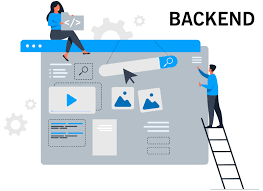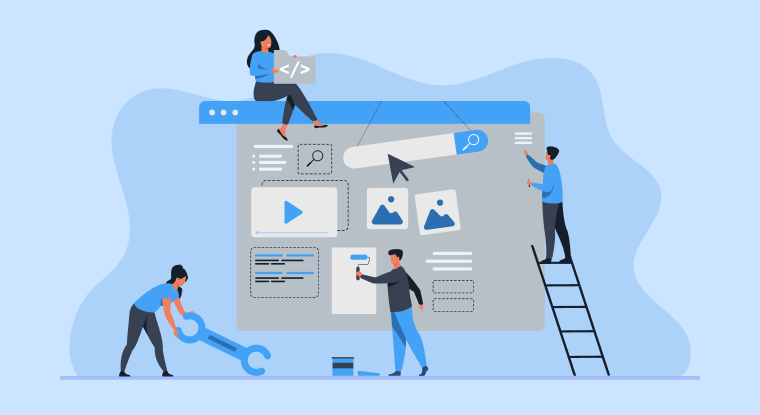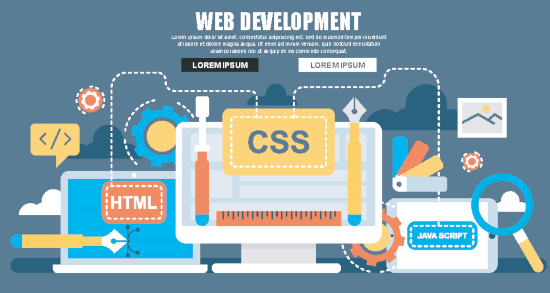Back-end development refers to the server-side of web development, focusing on databases, server logic, and application programming interfaces (APIs) that manage the data exchange between the client and server. While front-end development creates the user interface, back-end development ensures that everything works smoothly behind the scenes. This article delves into the key aspects of back-end development, including essential technologies, best practices, and trends shaping the field.
What is Back-End Development?
Back-end development is responsible for managing the server, application, and database that power a website or web application. It involves writing server-side code, creating APIs, and managing data storage. Back-end developers ensure that data is processed efficiently and securely, providing users with a seamless experience.
Key Technologies in Back-End Development
Programming Languages: Back-end developers typically use languages such as Python, Ruby, Java, PHP, and Node.js. Each language has its strengths and is suited for different types of applications. For example, Python is popular for its simplicity and readability, while Java is often used for large-scale enterprise applications.
Frameworks: Frameworks provide a structured approach to back-end development, offering pre-built components and tools. Popular back-end frameworks include:
- Express.js (Node.js)
- Django (Python)
- Ruby on Rails (Ruby)
- Spring (Java)
Databases: Back-end developers work with databases to store and manage data. There are two main types of databases:
- Relational Databases: Use structured query language (SQL) for data management (e.g., MySQL, PostgreSQL).
- NoSQL Databases: Offer flexible data models and are suitable for unstructured data (e.g., MongoDB, Cassandra).
APIs (Application Programming Interfaces): APIs enable communication between the front end and back end. RESTful APIs and GraphQL are common standards that allow developers to create endpoints for data retrieval and manipulation.
Server Management: Back-end developers must understand how to configure and manage servers, including cloud services like AWS, Google Cloud, and Microsoft Azure. This includes deployment, scaling, and monitoring applications.
Best Practices for Back-End Development
- Security: Implementing security measures is crucial for protecting user data and preventing attacks. Common practices include data encryption, input validation, and authentication mechanisms (e.g., OAuth, JWT).
- Scalability: Designing applications to handle increasing loads is vital. This can involve optimizing database queries, implementing caching strategies, and using load balancers to distribute traffic.
- Code Organization: Maintaining clean and organized code is essential for collaboration and long-term maintenance. Adopting design patterns and following coding conventions can enhance code readability and manageability.
- Version Control: Utilizing version control systems like Git is important for tracking changes, collaborating with team members, and managing project history.
- Documentation: Comprehensive documentation helps ensure that APIs, code, and processes are understandable for current and future developers. This aids in onboarding new team members and maintaining project continuity.
Emerging Trends in Back-End Development
- Microservices Architecture: Microservices break down applications into smaller, independent services that can be developed, deployed, and scaled separately. This approach enhances flexibility and allows for faster development cycles.
- Serverless Computing: Serverless architecture enables developers to build applications without managing server infrastructure. This model allows for automatic scaling and reduced operational costs, as cloud providers handle server management.
- GraphQL: GraphQL is gaining popularity as an alternative to REST for API development. It allows clients to request only the data they need, reducing over-fetching and improving performance.
- Containerization: Tools like Docker enable developers to package applications and their dependencies into containers, ensuring consistency across different environments. Container orchestration platforms like Kubernetes facilitate managing and scaling containerized applications.
- Real-Time Data Processing: With the rise of applications requiring real-time data updates (e.g., chat applications, live dashboards), technologies like WebSockets and server-sent events are becoming essential for back-end developers.
Conclusion
Back-end development is a critical component of web development that ensures applications run smoothly and securely. By mastering essential technologies and following best practices, back-end developers can create robust and efficient systems that power engaging user experiences. As the field continues to evolve with emerging trends, staying updated on the latest advancements will be crucial for success in this dynamic industry.



